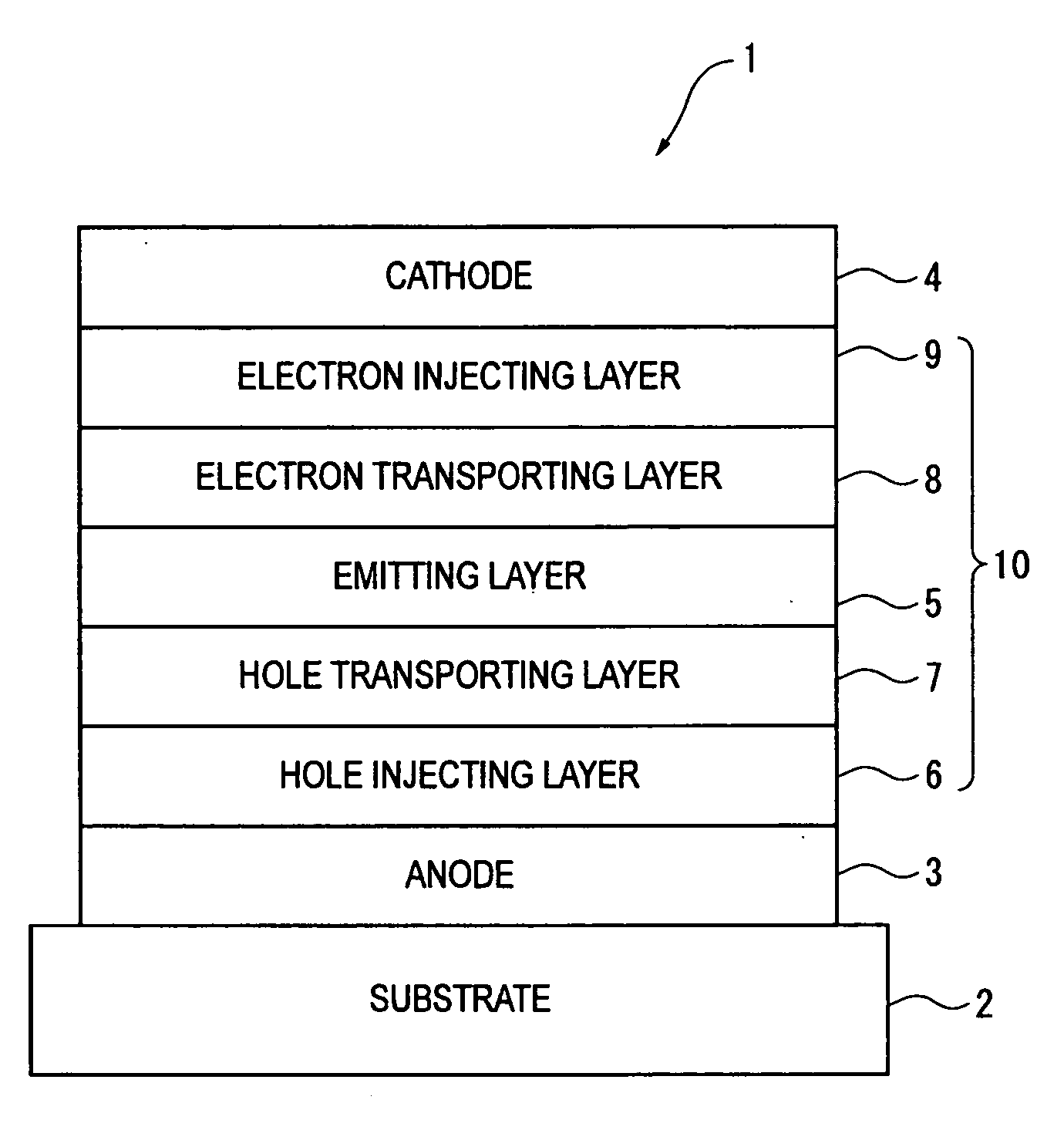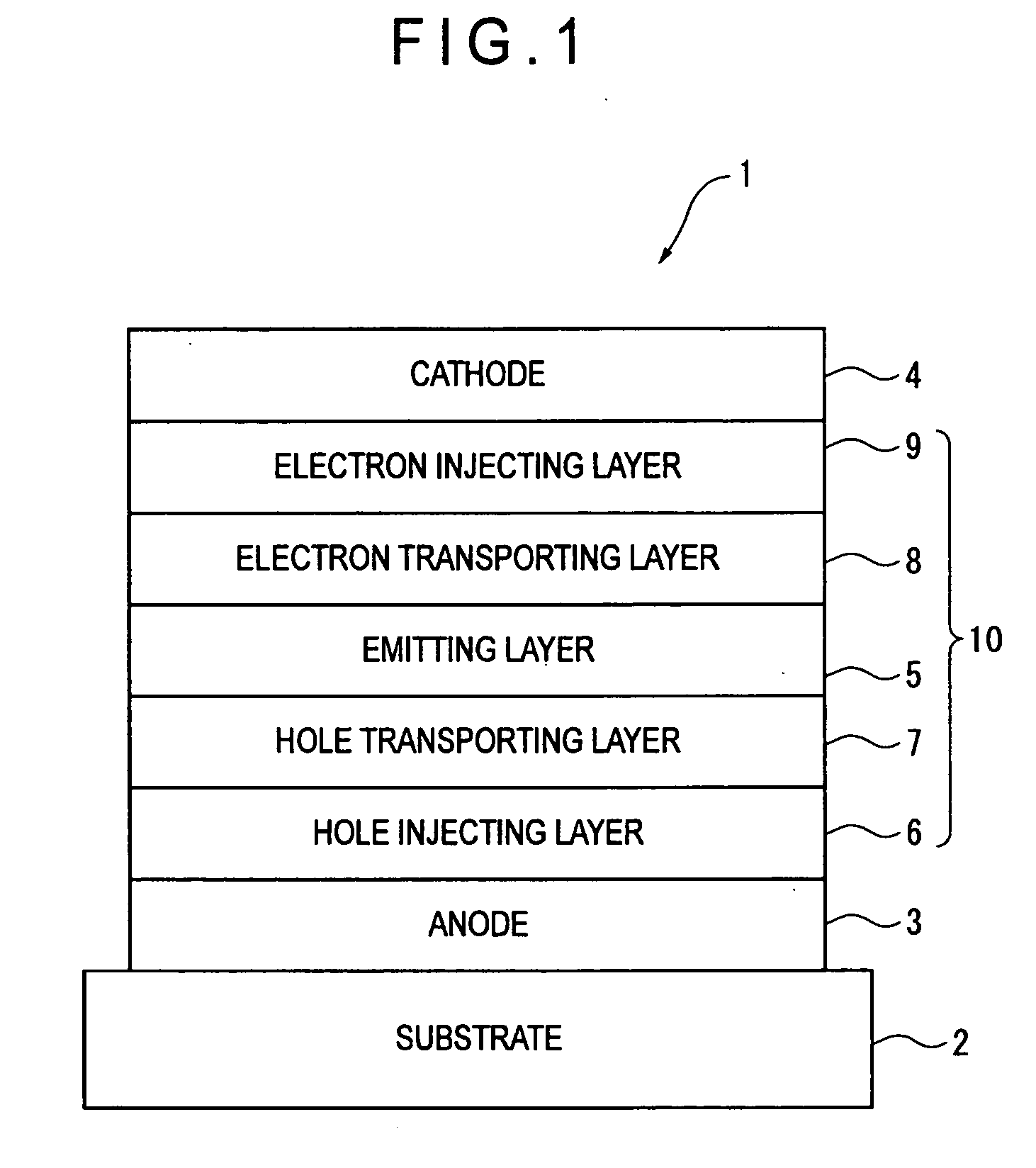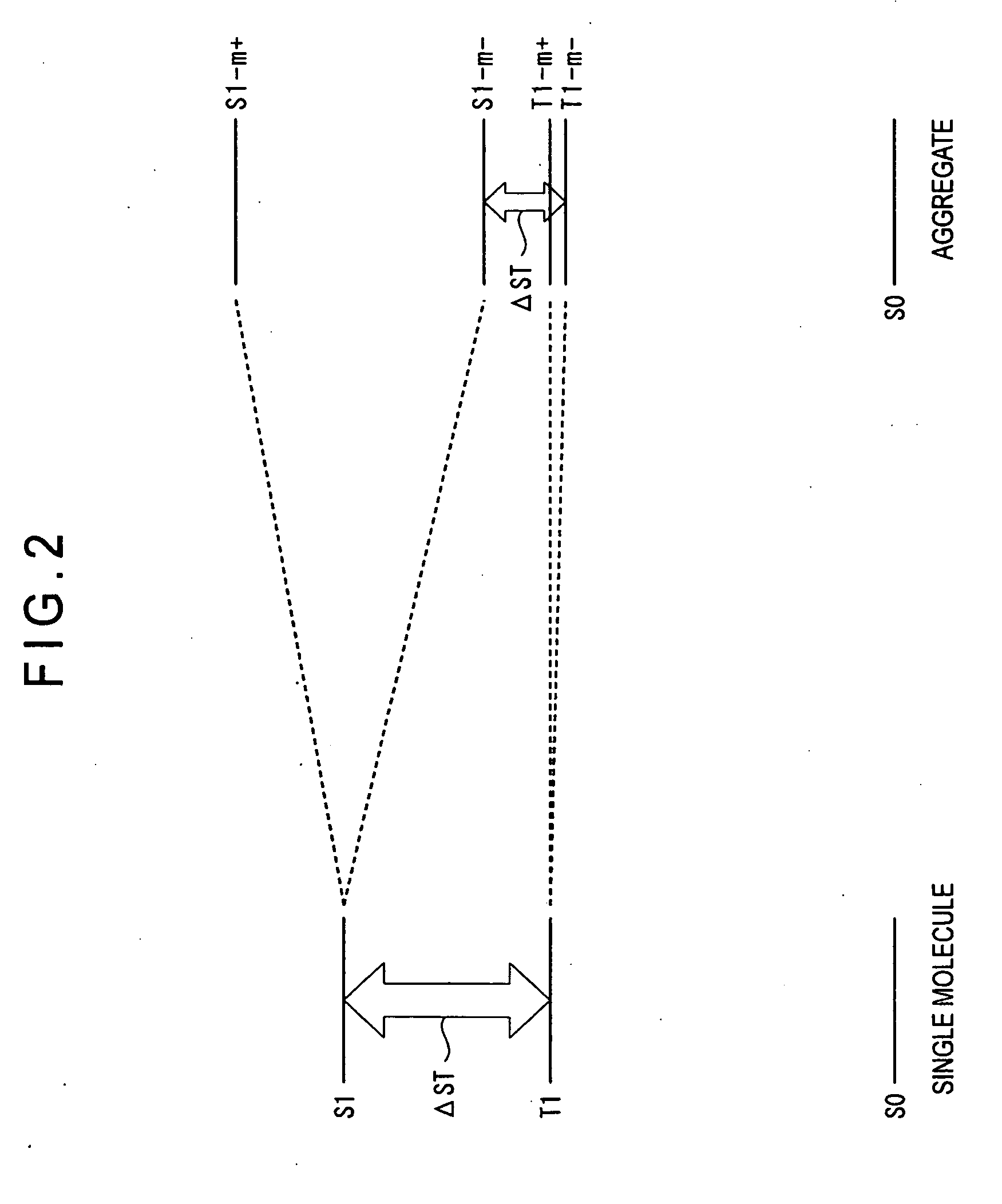Organic electroluminescence device
- Summary
- Abstract
- Description
- Claims
- Application Information
AI Technical Summary
Benefits of technology
Problems solved by technology
Method used
Image
Examples
synthesis example 1
Synthesis of GH-4
[0184]Under an argon gas atmosphere, an intermediate A (4.4 g, 21 mmol) synthesized according to the method described in JP-A-2010-180204, an intermediate B (4.7 g, 10 mmol) synthesized according to the method described in International Publication No. WO03 / 080760, tris(dibenzylidene acetone)dipalladium (0.37 g, 0.4 mmol), tri-t-butylphosphonium tetrafluoroborate (0.46 g, 1.6 mmol), t-butoxysodium (2.7 g, 28 mmol) and anhydrous toluene (100 ml) were sequentially added and refluxed for eight hours.
[0185]After the reaction solution was cooled down to the room temperature, an organic layer was separated and an organic solvent was distilled away under reduced pressure. The obtained residue was refined by silica-gel column chromatography, so that a target compound GH-4 (3.6 g, a yield of 50%) was obtained.
[0186]FD-MS analysis consequently showed that m / e was equal- to 722 while a calculated molecular weight was 722.
[0187]A synthesis scheme of the target compound GH-4 is ...
synthesis example 2
Synthesis of BH-1
[0188]
[0189]Under a nitrogen gas atmosphere, to a flask, 3,6-dibromocarbazole (5 g, 15.4 mmol), phenylboronic acid (4.1 g, 33.9 mmol), tetrakis(triphenylphosphine)palladium (0.7 g, 0.6 mmol), toluene (45 ml) and 2M sodium carbonate (45 ml) were mixed in sequence, and were stirred for eight hours at 80 degrees C. An organic phase was separated and then concentrated under reduced pressure by an evaporator. The obtained residue thereof was refined by silica-gel column chromatography, so that 3,6-diphenylcarbazole (3.6 g, a yield of 74%) was obtained.
[0190]Under an argon gas atmosphere, 2,6-dichloropyrazine (0.6 g, 3.9 mmol), 3,6-dibromocarbazole (2.6 g, 8 mmol), tris(dibenzylideneacetone)dipalladium (0.07 g, 0.08 mmol), tri-t-butylphosphonium tetrafluoroborate (0.09 g, 0.3 mmol), sodium t-butoxide (0.5 g, 5.5 mmol), and anhydrous toluene (20 ml) were mixed in sequence, and heated to reflux for 8 hours.
[0191]After the reaction solution was cooled down to the room temper...
example 1
[0218]A glass substrate (size: 25 mm×75 mm×1.1 mm thick, manufactured by Geomatec Co., Ltd.) having an ITO transparent electrode (anode) was ultrasonic-cleaned in isopropyl alcohol for five minutes, and then UV / ozone-cleaned for 30 minutes. A film of ITO was 130 nm thick.
[0219]After the glass substrate having the transparent electrode line was cleaned, the glass substrate was mounted on a substrate holder of a vacuum evaporation apparatus. Initially, the compound HI-1 was evaporated on a surface of the glass substrate where the transparent electrode line was provided in a manner to cover the transparent electrode, thereby forming a 50-nm thick film of the compound HI-1. The HI-1 film serves as a hole injecting layer.
[0220]After the film formation of the HI-1 film, a compound HT-1 was evaporated on the HI-1 film to form a 60-nm thick HT-1 film. The HT-1 film serves as a hole transporting layer.
[0221]The compound GH-4 (the host material) and the compound GD-1 (the fluorescent dopant m...
PUM
 Login to View More
Login to View More Abstract
Description
Claims
Application Information
 Login to View More
Login to View More - R&D
- Intellectual Property
- Life Sciences
- Materials
- Tech Scout
- Unparalleled Data Quality
- Higher Quality Content
- 60% Fewer Hallucinations
Browse by: Latest US Patents, China's latest patents, Technical Efficacy Thesaurus, Application Domain, Technology Topic, Popular Technical Reports.
© 2025 PatSnap. All rights reserved.Legal|Privacy policy|Modern Slavery Act Transparency Statement|Sitemap|About US| Contact US: help@patsnap.com



